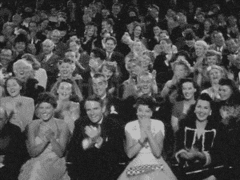Flamenco de Juan TAMARIZ
Annonces
- Pas de pub non magique pour les membres du Cercle VM. Clique ici pour en savoir plus !
-
Messages
-
Par Bruno RBLS · Publié le
🔥 16 € (Prix Neuf Boutique sans port : 30€) 🚚 PORT SUIVI COMPRIS ( France ) ❇️ COMME NEUF 💰 Paiement PayPal / Pas d’échange 🚨 Tout le monde aime The Card At Any Number et Martin a une super version avec TEACAN. Cette version est complètement automatique et super amusante à réaliser ! ➡ Points à retenir Réinitialisation instantanée Entièrement examinable Toute carte librement sélectionnée Effectuez avec une précision de 100% Routine divertissante Le spectateur compte et distribue les cartes Une carte différente à chaque fois Aucun travail de mémoire ou tour de passe-passe requis ➡ C'est vraiment un miracle automatique - réinitialisation instantanée, entièrement examinable et divertissant comme par magie. ➡ Le Gimmick spécial fera tout le travail pour vous une fois que vous aurez configuré votre jeu de cartes habituel. Cette configuration unique prendra jusqu'à cinq minutes et n'aura pas besoin d'être répétée à moins que vous ne laissiez tomber ou ne déplaciez accidentellement les cartes. ➡ Livret en anglais mais vraiment super super simple à comprendre Gimmick inclus ( neuf ) -
Par Bruno RBLS · Publié le
🔥 12 € (Prix Neuf Boutique sans port : 35€) 🚚 PORT SUIVI COMPRIS ( France ) ❇️ COMME NEUF 💰 Paiement PayPal / Pas d’échange 🚨 Le gimmick Exchange Rate de Cameron Francis vous permet d'effectuer un changement spectaculaire entre une pièce de monnaie et un billet plié. ➡ Vous empruntez une pièce de monnaie à votre spectateur. Il signe un côté, vous signez l'autre. Vous lui proposez ensuite de lui en mettre plein la vue. Et si vous n'y arrivez pas, vous lui dites que vous lui donnerez le billet qui se trouve dans votre poche (il peut s'agir de n'importe quelle devise) ! Tenant la pièce signée au bout de vos doigts (manches retroussées), vous donnez une petite secousse et vous tenez maintenant le billet ! Pas de couverture et pratiquement AUCUN tour de passe-passe. Vous fouillez ensuite dans votre poche (ou demandez au spectateur de le faire si vous vous sentez courageux), et récupérez la pièce signée. BONZA ! ➡ Exchange rate est FACILE. C'est SUPER VISUEL. Et c'est amusant à exécuter ! ➡ Et ce n'est pas tout. Dans cette vidéo, vous apprendrez également : DRIVEN - un pen thru bill 100% impromptu. Empruntez le stylo. Empruntez le billet. Une magie incroyable, n'importe quand, n'importe où. UNINKED - l'échange de billets sur l'acide. Vous proposez à votre spectateur de lui donner un dollar pour le remercier de sa réaction à votre magie. Mais vous remarquez que le billet porte de vilaines marques... ils vont adorer ce qui va suivre ! TEAR IT UP 2 - Une carte en deux phases, déchirée et restaurée, qui laissera vos spectateurs sans voix. CHEQUE THIS - un billet emprunté se transforme en un chèque de reconnaissance de dette. Ensuite, une carte sélectionnée est montrée comme ayant été prédite sur le chèque. Et pour couronner le tout, le billet réapparaît à l'intérieur d'un étui à cartes qui a été exposé pendant tout ce temps ! IMPLICIT PROGRESSION - Un montage progressif facile et impromptu ! A STRANGE REVISIT - Les valets font quelque chose d'étrange avec la sélection d'un spectateur. Quelque chose de TRÈS étrange. Cagey - (tiré du best-seller Omega Mutation Set) - Une transposition étonnante avec une fin qui fera chavirer vos spectateurs. Durée approximative : 2h08 -
Par Bruno RBLS · Publié le
🔥 14 € (Prix Neuf Boutique sans port : 35€) 🚚 PORT SUIVI COMPRIS ( France ) ❇️ COMME NEUF 💰 Paiement PayPal / Pas d’échange 🚨 Completing the Cut est PLEIN d'effets de cartes profondément mystérieux. C'est le genre de matériel de cartes qui ne vous étonne pas seulement maintenant, mais qui vous laisse perplexe des heures, voire des jours, après le visionnage. ➡ Par exemple, prenez The Mayhew, un effet où un jeu de cartes s'attache à vos mains par des charges statiques apparentes. La présentation et la méthode fonctionnent ensemble pour étonner le public à fond. Ou encore Symmetrical Matching, un effet qui a trompé de nombreux magiciens experts ➡ Sommaire * The Mayhew * Insignia * E.S. Location * Symmetrical Matching * Elementary Spoon Bend * When in Doubt, Read a Palm * Untouchables * Sprung Aces * Otto Aces * Black Hole Popout * S.G. Popout * Schlutzick ➡ Ce dvd est pour les passionnés de cartes SÉRIEUX. Les effets ne sont pas particulièrement difficiles, mais reposent plutôt sur une construction intelligente et l'application de concepts magiques sournois sous-explorés pour créer quelque chose de vraiment spécial.
-
-
Statistiques des membres
-
Total des membres8312
-
Maximum en ligne4524
-
-
Statistiques des forums
-
Total des sujets84.4k
-
Total des messages680.9k
-





.gif.43fd222fbabeddb5a351e8e6c6887e3f.gif)

Recommended Posts
Rejoins la conversation !
Tu peux publier maintenant et t'enregistrer plus tard. Si tu as un compte, connecte-toi maintenant pour publier avec ton identité.